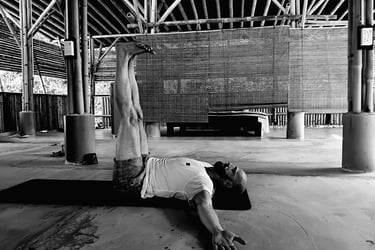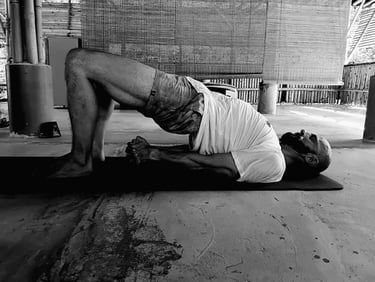Yoga & Chronic Venous Insufficiency
Gentle Movement
Movements from the Pawanmuktasana Series (Parts 1 & 2) are often included in sequences designed to support joint mobility and ease. For the first part of this series—focused on the feet and ankles—we recommend removing your compression socks to allow for a full range of motion and the intended mobility benefits. In fact, many students with CVI choose to remove their socks at the start of class for this reason.
For CVI, combining compression, leg elevation, and movement (such as walking) is commonly recommended. In the case of DVT prevention, compression plays a key role, while elevation may support symptom relief.
Swelling in the legs can also occur after long periods of sitting—such as during flights or car rides—and during pregnancy. Compression socks may support circulation in these cases. Similarly, gentle movement practices such as this sequence can be explored as part of a broader approach to comfort and mobility.
If you’ve been prescribed compression socks, please check with your doctor whether a gentle yoga practice is appropriate as part of your overall care—especially for conditions like Chronic Venous Insufficiency (CVI).
For those with vein-related health concerns, such as varicose veins or CVI, encouraging healthy circulation may help reduce discomfort and support overall vascular health. One accessible way to promote gentle movement and circulation is through yoga-based practices.




More Insights
